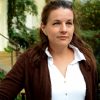


Research on the Art Collections of Johann Ludwig and Mary Jacoby and Cäcilie and Ernst Holländer, Berlin
Provenance research project in cooperation with Carolyn Hollander, funded by the German Lost Art Foundation
The art collections of the Berlin families Jacoby, Neumann, and Holländer were built up over three generations: Mary Jacoby’s (1869-1942) collection of paintings, for example, goes back to her parents, the Breslau-born banker Max Markus Neumann (1823-1901) and his wife Anna, née Mayer (1842-1912). Together with her husband, Johann Ludwig Jacoby (1862-1942), who was a commercial councillor and owner of the oldest cotton wool factory in Berlin, the Julius and Adolph Jacoby Cotton Wool Factory, Mary Jacoby amassed a collection of clocks, a Biedermeier collection with miniatures and some Japanese objects, as well as paintings.
In 1866, Johann Ludwig Jacoby’s parents and uncle, Adolph and Cäcilie and Julius and Lydia (the sisters had married two brothers), had donated the “Eternal Light” on the occasion of the dedication of the New Synagogue in Berlin, which continued to burn during the November pogrom of 1938 and was not rediscovered until 1989 during construction work. Julius Jacoby had been chairman of the board of the Berlin Jewish community since 1901.
Mary Jacoby had seven siblings, including the zoologist and ornithologist Oscar R. Neumann (1867-1946), the physicist Elsa Neumann (1872-1902), the first woman in Germany to earn a Ph.D. in physics, and the artist Alice Neumann (1866-1943).
Johann Ludwig and Mary Jacoby’s daughter Cäcilie (1890-1941) studied law and was editor of the magazine “Die Studentin”. Their son Hans Jacoby (1896-1984) also studied law and later worked for the Dresdner Bank. In 1919, Cäcilie Jacoby married Ernst Julius Holländer, a lawyer born in Berlin in 1883. The couple had five children: Gerhard, Kurt, Eva, Hans, and Günter. Cäcilie and Ernst Holländer also amassed an art collection. Cäcilie also acquired first and special editions of books. From 1933 on, the Neumann, Jacoby and Holländer families were persecuted as Jews.
The collection of Johann Ludwig and Mary Jacoby was sold involuntarily due to persecution in 1941 through auctions at the Berlin auction house Gerhard Harms and after the death of Johann Ludwig and Mary Jacoby in 1942. The collection of Cäcilie and Ernst Holländer was first looted along with the furnishings in November 1941, after the couple had been deported from Berlin, and then the remains were sold to the owner of Giesebrechtstr. 3, the master baker Franz Spierling, and other persons by the Asset Disposal Office of the Chief Finance President of Berlin-Brandenburg.


